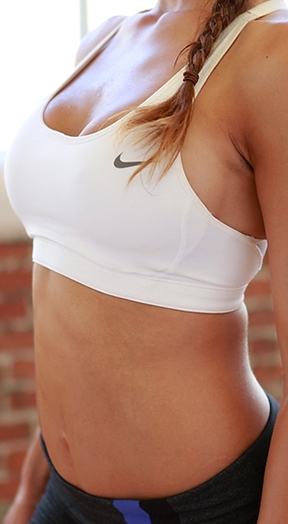Losing one or both breasts to breast cancer treatment can be physically and psychologically taxing on patients. For many patients, restoring the appearance of the breasts is an important part of the recovery process. Today, surgeons can offer these patients a number of breast reconstruction options. One of the most advanced techniques is breast reconstruction using fat grafting. This approach allows surgeons to rebuild the breasts using a natural and compatible material: the patient’s own tissue. Bay Area Plastic Surgeon John R. Griffin has extensive experience performing breast reconstruction with fat transfer.
Candidates
The best candidates for the fat grafting breast reconstruction technique include those who prefer to use natural materials, as opposed to breast implants, to increase the size and shape of the breasts. Patients should also be non-smokers and in relatively good health.
The main requirement for any fat grafting procedure is a sufficient amount of body fat. The patient must have an adequate amount of fat to add enough volume to the breasts. When evaluating the patient’s fat content, surgeons must consider that a series of fat injections will likely be performed to produce a breast size that is satisfactory to the patient.
Women who want a larger or specific increase in the size of the breasts may be better candidates for implant-based breast reconstruction. Breast implants offer surgeons better accuracy and control over the final size and shape of the breasts. Some patients opt to undergo implant-based breast reconstruction to increase the size of the breasts, along with fat grafting, which will provide additional coverage for the implant.
Techniques
The fat grafting breast reconstruction procedure involves several techniques that are employed to increase the size of the breasts.
- Tissue expanders: Patients that did not undergo a skin-sparing mastectomy may require placement of a tissue expander to stretch out the skin so that it can accommodate more volume. The tissue expander can be placed at the time of the mastectomy.
- Liposuction: Fat grafting patients will undergo a liposuction procedure so enough fat can be harvested for use in the breast reconstruction stage of the procedure. The fat will be removed from another part of the body, most often the stomach, thighs, flanks, or buttocks.
- Fat grafting: Once the fat has been processed, it will be injected into the breasts to restore volume. Patients may return to the surgeon up to five times to have additional fat injected into the breasts.
Other Considerations
While breast reconstruction with the fat grafting technique is safe and effective, it is associated with some disadvantages:
- With each round of fat injection, some of the fat may be lost during the recovery period. This results in the need for a few rounds of injections.
- Since some of the fat may be lost when it is re-injected into the breasts, patients require enough fat to be removed to allow for some reabsorption.
- Patients who desire a significant size increase may not achieve the breast volume that they want with the fat transfer technique. These patients may be better suited to implant-based breast reconstruction methods.
Results
The results of the procedure are visible immediately. However, as the recovery period progresses, patients should expect to see some reabsorption of the fat. To reach their desired results, patients can undergo a series of fat injections, provided that enough fat is harvested during the liposuction procedure. The fat that is retained in the breasts is permanent.
Consultations
To learn more about the fat grafting breast reconstruction procedure, and find out if you are a candidate for this technique, contact Dr. John R. Griffin’s practice today.







